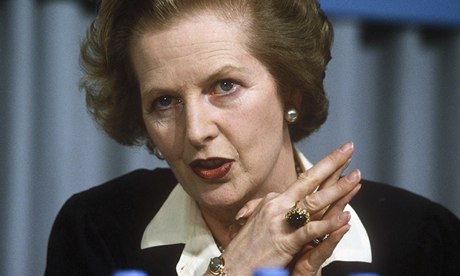Michael Pettis in The FT
The US dollar, analysts often propose, is the latest in a 600-year history of global reserve currencies. Each of its predecessor currencies was eventually replaced by another, and in the same way the dollar will eventually be replaced by one or more currencies.
The problem with this argument, however, is that there is no such history. The role of the US dollar in the global system of trade and capital flows is unprecedented, mainly because of the unprecedented role the US economy plays in global trade and capital imbalances. The fact that so many analysts base their claims on this putative history only shows just how confused the discussion has been.
It’s not that there haven’t been other important currencies before the dollar. The history of the world is replete with famous currencies, but these played a very different role in the flow of capital and goods across international borders. Trade before the days of dollar dominance was ultimately settled in gold or silver. A country’s currency could only be a “major” trade currency to the extent that its gold and silver coins were widely accepted as unadulterated or, by the 19th century, if the convertibility of its paper claims into gold or silver was highly credible.
This is not just a technical difference. A world in which trade is denominated in gold or silver, or in claims that are easily and quickly convertible into gold and silver, creates very different conditions from those today. Consider the widely-held belief that sterling once ruled the world in much the same way the dollar does today.
It simply isn’t true. While sterling was indeed used more than other currencies in Europe to settle trade, and the credibility of its conversion into gold was hard-earned by the Bank of England after the Napoleonic wars, whenever sterling claims rose relative to the amount of gold held by the Bank of England, its credibility was undermined. In that case foreigners tended to reverse their use of sterling, forcing the Bank of England to raise interest rates and adjust demand to regain gold reserves.¹
This does not happen to the US dollar. Trade conditions under gold- or silver-standards are dramatically different from those in a dollar world in at least three important ways. First, trade imbalances in the former must be consistent with the ability of economies to absorb gold and silver inflows and outflows. This means that while small imbalances were possible to the extent that they allowed wealthier economies to fund productive investment in developing economies, this was not the case for large, persistent trade imbalances — except under extraordinary circumstances.²
Second, and much more importantly, as trade imbalances reverse, the contraction in demand required in deficit countries is matched by an expansion in demand in surplus countries. That is because while monetary outflows in deficit countries force them to curtail domestic demand to stem the outflows, the corresponding inflows into the surplus countries cause an automatic expansion of domestic money and credit that, in turn, boosts domestic demand. Under the gold- and silver-standards, in other words, trade imbalances did not put downward pressure on global demand, and so global trade expansion typically led to global demand expansion.
And third, under gold and silver standards it was trade that drove the capital account, not vice versa as it is today. While traders chose which currency it was most convenient in which to trade, shifting from the use of one currency to another had barely any impact on the underlying structure of trade.
None of these conditions hold in our dollar-based global trading system because of the transformational role played by the US economy. Because of its deep and flexible financial system, and its well-governed asset markets, the US — and other anglophone economies with similar conditions, eg the UK, Canada, and Australia — are the preferred location into which surplus countries dump their excess savings.
Contrary to traditional trade theory, in which a well-functioning trading system might involve small, manageable capital flows from advanced, capital-intensive economies to capital-poor developing economies with high investment needs, nearly 70-80 per cent of all the excess savings — from both advanced and developing economies — is directed into the wealthy anglophone economies. These in turn have to run the corresponding deficits of which the US alone typically absorbs more than half. As I have discussed elsewhere, this creates major economic distortions for the US and the other anglophone economies, whose financial sectors benefit especially at the expense of their manufacturing sectors.
It is only because the US and, to a lesser extent, the anglophone economies, are willing to export unlimited claims on their domestic assets — in the form of stocks, bonds, factories, urban real estate, agricultural property, etc — that the surplus economies of the world are able to implement the mercantilist policies that systematically suppress domestic demand to subsidise their manufacturing competitiveness. This is precisely what John Maynard Keynes warned about, unsuccessfully, in 1944. He argued that a dollar standard would lead to a world in which surplus and deficit countries would adjust asymmetrically, as the former suppressed domestic demand and exported the resulting demand deficiency.
The point is that dollar dominance isn’t simply about choosing to denominate trading activities in dollars the way one might have chosen, in the 19th century, between gold-backed franc, gold-backed sterling, or Mexican silver pesos. It is about the role the US economy plays in absorbing global savings imbalances. This doesn’t mean, by the way, that the US must run permanent deficits, as many seem to believe. It just means that it must accommodate whatever imbalances the rest of the world creates.
In the fifty years characterised by the two world wars, for example, the US ran persistent surpluses as it exported savings. Because Europe and Asia at the time urgently needed foreign savings to help rebuild their war-torn economies, it was the huge US surpluses that put the dollar at the centre of the global trading system during that period.
By the 1960s and 1970s, however, Europe and Asia had largely rebuilt their economies and, rather than continue to absorb foreign savings, they wanted to absorb foreign demand to propel domestic growth further. Absorbing foreign demand means exporting domestic savings, and because of its huge domestic consumer markets and safe, profitable and liquid asset markets, the obvious choice was the US. Probably because of the exigencies of the cold war, Washington encouraged them to do so. Only later did this choice congeal into an economic ideology that saw unfettered capital flows as a way to strengthen the power of American finance.
This is why the end of dollar dominance doesn’t mean a global trading system that simply and non-disruptively shifts from denominating trade in dollars to denominating it in some other currency. It means instead the end of the current global trading system — Ie the end of the willingness and ability of the anglophone economies to absorb up to 70-80 per cent of global trade surpluses, the end of large, persistent trade and capital flow imbalances, and, above all, the end of mercantilist policies that allow surplus countries to become competitive at the expense of foreign manufacturers and domestic demand.
The end of dollar dominance would be a good thing for the global economy, and especially for the US economy (albeit not, perhaps, for US geopolitical power), but it can’t happen without a transformation of the structure of global trade, and it probably won’t happen until the US refuses to continue absorbing global imbalances as it has for the past several decades. However it happens, a world in which trade isn’t structured around the dollar will require a massive transformation of the structure of global trade — and for surplus countries like Brazil, Germany, Saudi Arabi, and China, this is likely to be a very disruptive transformation.
1. Nor was sterling even the leading trade currency in the 18th and 19th centuries. More widely used in much of Asia and the Americas were Mexican silver pesos, whose purity and standardisation were much valued by traders and so formed the bulk of trade settlements.
2. One can argue that the closest comparison to today was 17th century Spain, when Spain ran large, persistent trade deficits, but of course these were the automatic consequences of huge inflows of American silver, and Spain didn’t accommodate foreign imbalances so much as create them, to the benefit especially of England and the Netherlands. In a recent conversation George Magnus also noted how the famous sterling balances of the 1940s illustrated another — very different — example in which the structure of trade could not be separated from the use of its underlying currency.



